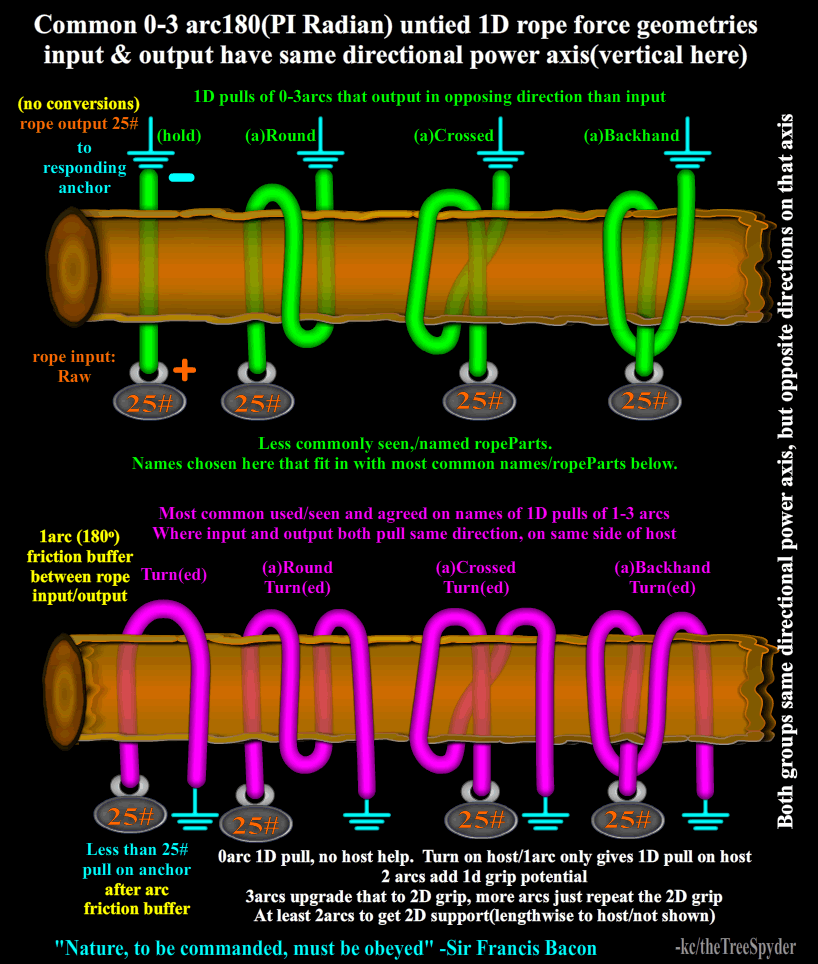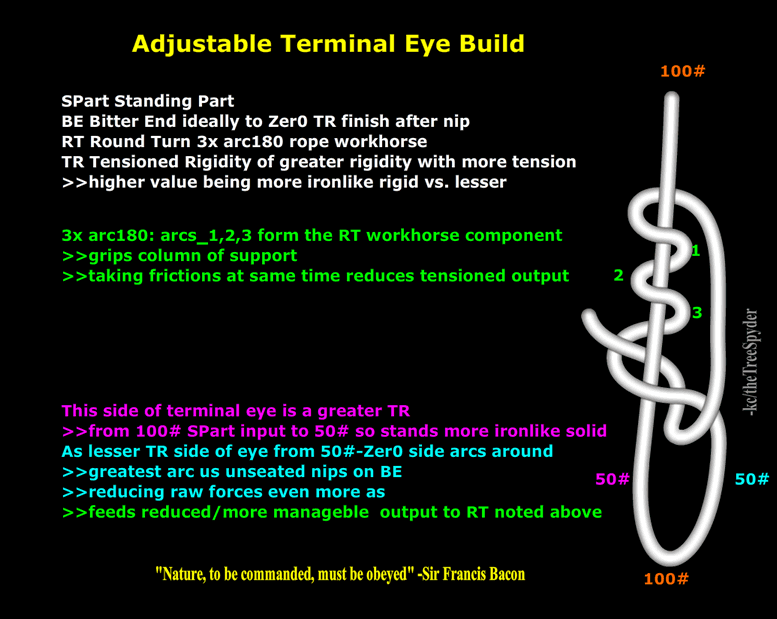This is a simple adjustable UTILITY grade eye.
To me simpler to fumble especially in smallers than Blake's/ProGrip(some say ProhGrip for real 1st 'inventor' of the form :Heinz Prohaska or even Prohaska hitch, that really got popularized as arborist's Blake's tho)
>>a build properly set in proper round flexible/not too stiff material(rope), has fair grip truly
But most wonderous to this knot/rope geek is in dropping 1 of the 'interrupted' Turns of Blake's/ProGrip
>>more cleanly minimizes the form to absolute minimal needed i think to work
Again we see here especially clearly the workhorse of an RT(Round Turn=3x continuous/uninterrupted arc180s) in rope usage
>>and then a simple/minimal anti-creep jam 'wedged' in, backing up the workhorse RT, very simply viewed in these 'cleaner' more minimal works. The anti-creep is swiss-army knife utility all at once of final termination to empower rest of system to load AND buffers force(pre-fixes) to the workhorse RT as still anti-creep(post RT), all the same time ! Protects workhorse RT, coming AND going !
.
The RT workhorse is what needs to be 'screwed' on to host like bottlecap, the interrupted turn can be much looser by comparison, but not too much so or slides.
Have always thought of this as a 'Half-Pro' and tongue in cheek upgrade to 5x uninterrupted arc180s(Dbl.RT)
>>call as a .... Double Half Pro ! of fiercer grip, but still simpler than formal Blakes for utility usage, would not consider proven to lifeline levels.
.
Other functions are on loading the load is like a positive force, the termination a ground that 'lights' points between with tension. Once empowered so, the RT workhorse can do it's job, and needs only a bit of anti-creep jam to cover/cleanup any remaining inefficiency of force reduction post RT.
Note how the SPart(Standing Part) is most tensioned rigidity, almost iron bar rigid compared to rest of later rope parts applied, so the other parts 'give way', as are less rigid so they are the ones 'displaced' to curl around the iron bar concept part (SPart).
The simple clean utility, is one prize here;
but the more 'transparent' cleaner/simpler view of internal works microcosm
>>a totally other dimension of prize that carries across MANY more things.
If can catch the hint to it's silhouette form here in plainer view, is easier to sift confidently the same works in other things to diagnose same .
.
edit:
Note too the final nip on BE(Bitter End) is pretty raw from half of eye load tension force squashing the reduced tension BE with a potential of 2x1 arc against the conceptual 'iron pipe' of the SPart. In flexibles/rope, tension gives the rigidity, so 'tensioned rigidity' to me, the least tensioned BE area would be as pillow soft rigidity to the iron rigidity of the SPart.
A crossing in rigids, pretty much 1 factor of change :pressure, the parts each have own 'native' rigidity in competition then powered by the forces. In rope/flexibles class the force change changes the tension AND rigidity of the competing members crossed, more likely to deform lesser part. So can get more of a tongue and groove against crossing slide and then force too! More like iron/steel strap stamping not just across, but into 2x4 to hold with force as powered parts of different rigidities in crossing; that lesser gives way to in.
.
Knots are simply system builds in rope; these are the points of manufacture as fingers form the material(rope)
>>these visible concepts seen show mechanix that carry to other systems as components of them too, this is rope work.





